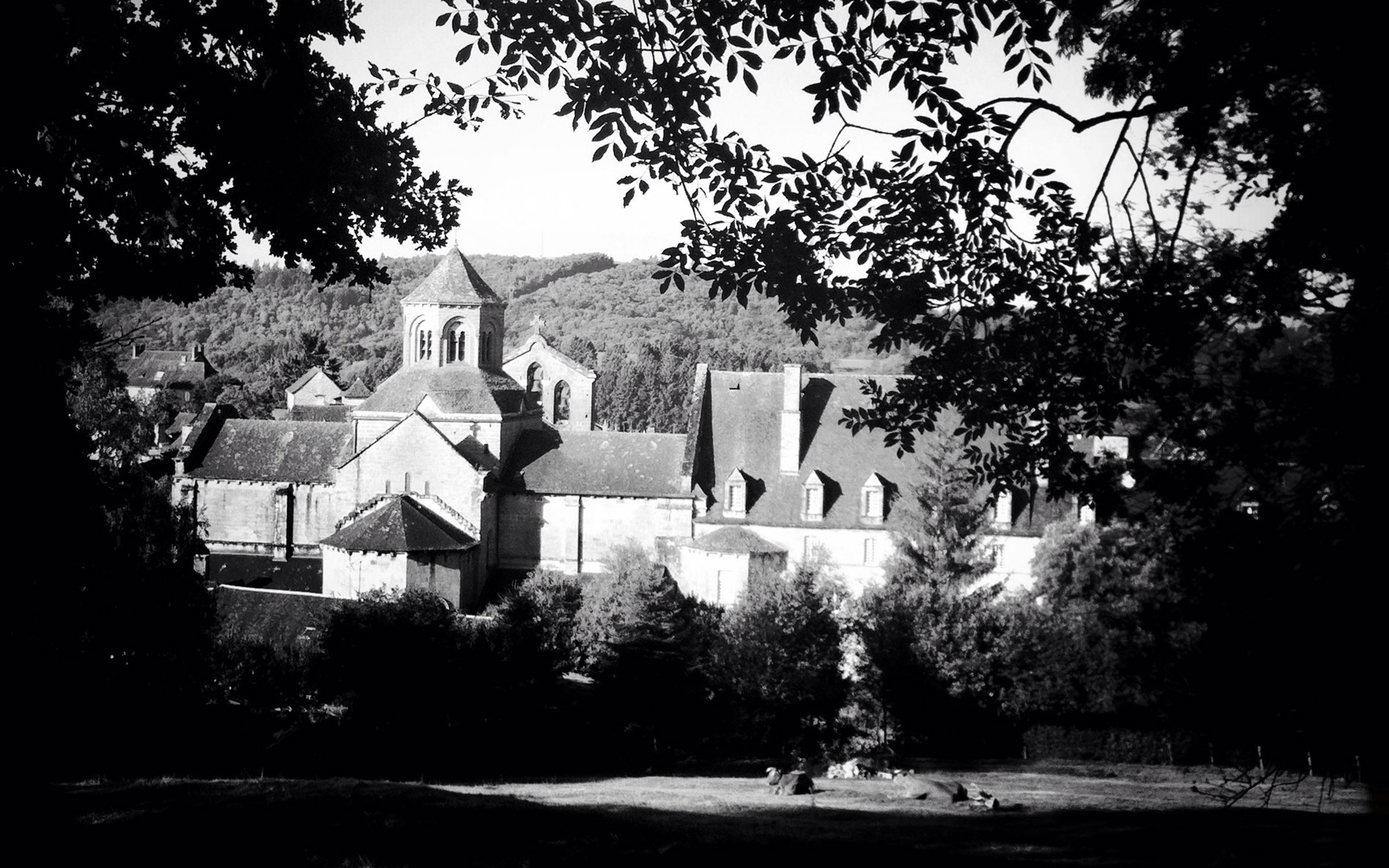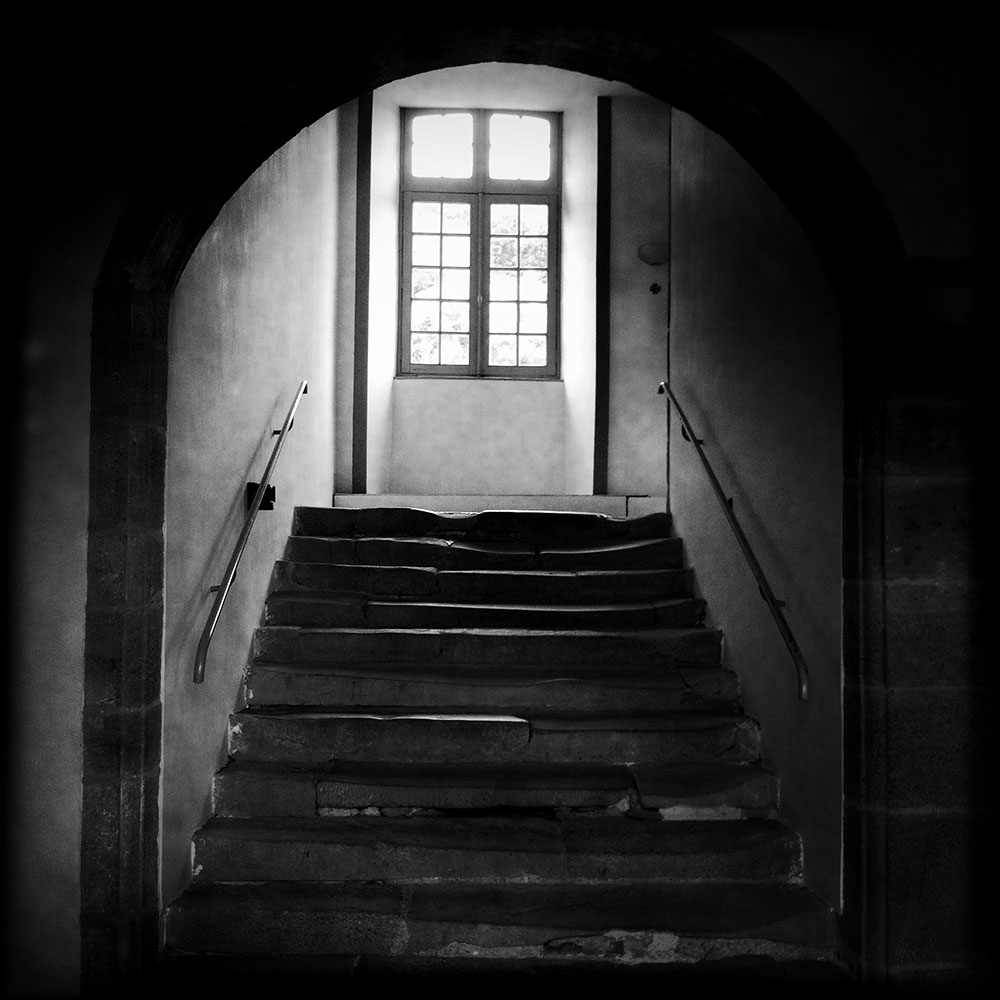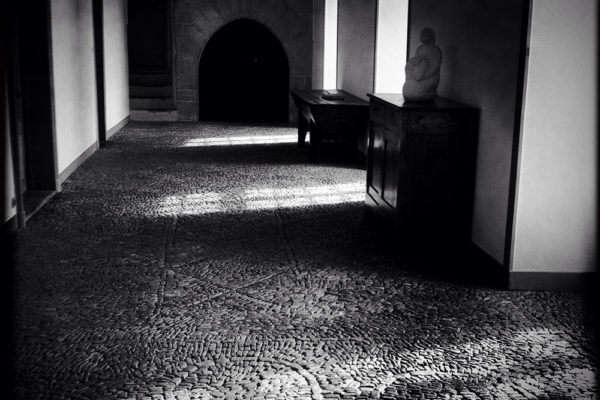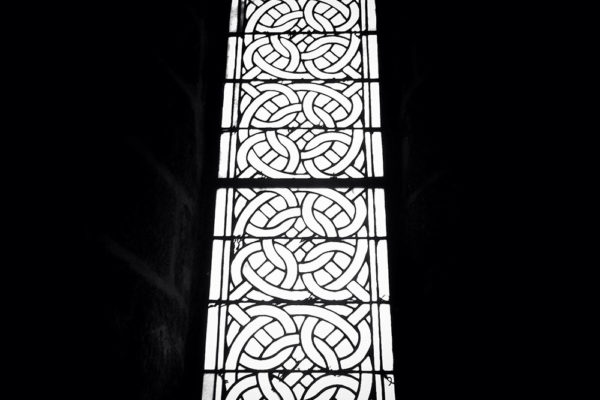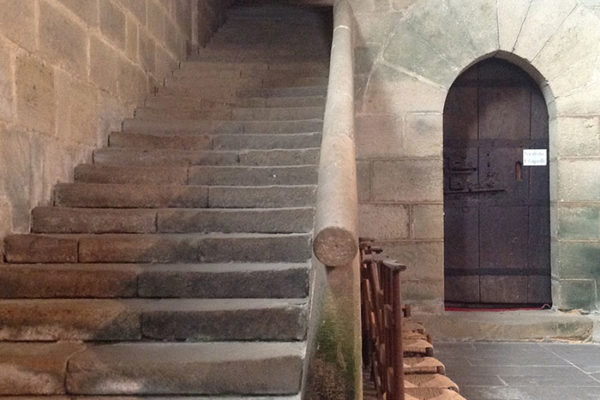Aubazine, the mystery of Chanel’s origins
More than a hundred years ago, Gabrielle Chanel opened her first boutique in Deauville in 1913. With her simple lines, her borrowings from the men’s wardrobe, her taste for poor materials and her immoderate use of black and white, she revolutionised fashion. But where did her unique style come from? To understand the origin of the house’s codes, we have to follow in her footsteps, go back to the source, to Aubazine, the orphanage where she spent seven years of her life and where it all seems to have begun. – Pictures and text: Isabelle Cerboneschi, Aubazine
First of all, we must forget. Forget the adventuress, the milliner, the dressmaker, the borrower, the avant-garde, the friend of Picasso, Dalí, Stravinsky, the mistress of Boy Capel, of the Duke of Westminster, of Hans Gunther von Dinklage, the woman in black, the woman in white, the woman with the jewels, the empire, the No. 5, the tweed suit, the quilted leather bag, the apocryphal legend. All of this must be forgotten.
Then you have to be compassionate. First of all, you have to be compassionate with yourself. Take the trouble to look at your own wounds with a kindly eye. And let the fears, anxieties, anger, perhaps, generated by feelings of abandonment, betrayal and humiliation, surface in the heart. Who has not experienced this?
Only then can we try to look at all this from a child’s perspective. A child named Gabrielle Chanel, 11 and a half years old, who has just lost her mother. A little girl squeezed against her sisters, Julia (13) and Antoinette (8), in the cart of a father who is driving her towards her destiny. And her destiny, on that cold day in March 1895, was to be written behind a long stone façade ending in a church, the Abbey of Saint-Etienne. “At the age of 12, everything was taken away from me! And I died”, the woman who was called Coco Chanel would say years later.
Behind the wall, a monastic garden, a fountain surmounted by a cross, an unadorned building with a huge sloping roof covered with tiles, and colonnades. The Aubazine orphanage. It is here, in this closed place, sheltered from the world, that Gabrielle Chanel will spend seven years of her life.
What did I come to look for in Aubazine, this small village of Corrèze with 874 inhabitants, set at the foot of hills and thick forests, far from everything, where the winters are freezing? Try to understand. Try to decipher. To discover, perhaps. Go back to the source, to the origins. To look for Chanel before Chanel.
“I got into couture by chance”, she said to Paul Morand. But we know that style does not come to us by chance. It is born from the observation of figures, models, things liked or disliked, digested, integrated and transcribed into its own language. Now, in the absence of family and female examples, Chanel’s taste must have been forged here, in Aubazine, among the nuns dressed in black and white, in this monastery of Cistercian elegance, all in purity. His gaze came up against this Romanesque style turned towards the essential. So this is where you have to look. Try to make the stones speak. And if they have nothing to say, listen to the windows. And if they remain silent, discern the message in the stained glass windows, in the mosaic floor, anything that could be a clue to get closer, not to the character, but to the essence of Chanel, to this unique, strongly identifiable style, which continues to exist one hundred years later.
Where to start? Perhaps by following in the footsteps of the child and climbing one by one the worn steps that lead to the old dormitories, as she did every day. But before I reach the first floor, my gaze is caught by a window seen from the stairs. It doesn’t try to get out of the frame and escape into the sky, no, it chooses to rest on the frame that stands out on the white wall. When Gabrielle Chanel lived here, the frame was painted black. Was it these windows, in front of which she walked every day, that inspired the case for her first perfume, No 5?
WHEN STONE BECOMES A DIAMOND ORNAMENT
The first-floor gallery is a strange stone mosaic, both discreet and noble, with motifs that at first glance might seem esoteric: a moon, a sun, four five-pointed stars, further on a bishop’s mitre, a Maltese cross, a stylised flower, triangles and circles. If the Middle Ages were a time steeped in symbolism, there are certain signs among them to which no one knows how to give a meaning. However, we can discern those which represent the coat of arms of the commune. It is divided in two. The first half is red with a golden sun above two stars of the same colour. The second half is blue, decorated with a silver moon and two silver stars.
I can’t help but think of the Comet brooch that Mademoiselle Chanel created in 1932 for her Bijoux de Diamants exhibition. A five-pointed star. The number 5 in Gabrielle Chanel’s life is far from insignificant: it is the name she gave to her first perfume, it is also the day of the month she chose to present her collections: 5 February and 5 August. Five, finally, is the number of marble lions that watch over her grave in the Lausanne cemetery where she is buried. All the motifs on the mosaic floor are reminiscent of the famous jewellery collection presented in 1932, of which only a brooch remains as evidence.
“The delicate motifs of Mademoiselle Chanel’s jewellery are mainly of astronomical inspiration. Magnificent earrings in the shape of stars of various sizes; a superb comet whose tail wraps around the neck becomes a sparkling necklace; bracelets so fine that they look like beams of light; crescent moons to be fixed on hats or in the hair; and finally, a unique piece mounted on yellow gold, a dazzling sun of yellow diamonds, an assortment of unparalleled stones”, wrote Janet Flanner, a journalist for the New Yorker, after the opening of the exhibition on 7 November 1932. As for the Maltese cross, this motif can be found on the precious cuffs that Duke Fulco di Verdura designed over and over again for Chanel from 1933 to 1938.
The mind wanders from the stone mosaic floor to the jewels. It is as if Gabrielle Chanel had wanted to transcend, transmute would be more accurate, the elements of this orphaned childhood into the most precious thing of all…
THE DOUBLE C IN THE STAINED GLASS
The old dormitories are empty today. Only the sun penetrates them and leaves its shadow on the floor. One can imagine how cold the girls must have been, here, in winter, under the roofs, without a chimney. Opening a locked door, one discovers, hidden behind a forest of beams and debris, a huge oculus decorated with intertwining geometric patterns. If you look closely, you can make out the two embraced Cs of the famous logo. This double C can also be found in the church and in the chapel, written in lead letters on the stained glass windows in grisaille. How many hours did Gabrielle Chanel contemplate them?
The young orphans were obliged to practice their piety daily and to attend daily masses. To do this, they did not need to leave the abbey: they only had to go through a door located at the end of the former monks’ dormitory, which opens onto a stone staircase, 36 steps that lead to the transept of the abbey church. This staircase made such an impression on Gabrielle Chanel that she had it reproduced in her villa La Pausa. She wanted to build “the ideal Mediterranean villa” on a 2 hectare plot of land she had acquired in February 1929, on the heights of Roquebrune. One of the first things she asked the architect Robert Streitz, who was in charge of the project, to do was to recreate the staircase of the Aubazine abbey in the entrance hall. A strange request, when one knows how many veils she had put on in her past at the orphanage. If there is one word, of all words, that Gabrielle Chanel never uttered, it was the word orphanage. She was determined to erase all traces of the cruel fate that was hers,” wrote Edmonde Charles-Roux. As for the architect Robert Streitz, he had the elegance never to reveal the content of the conversation he had with the Mother Superior of Aubazine during his visit. The staircase still stands in the hall of the villa, which was bought by Chanel on 30 September 2015.
The abbey church resounds with the voices of a few visitors who stick to the bays. By dint of looking for clues everywhere, my eyes settle on each piece of wall, each statue. They finally notice this wooden piece of furniture built like an architecture, which stands out at the crossing of the transept, at the foot of the famous stone staircase that the orphans used every day. Built in the 12th century, this liturgical wardrobe is considered the oldest piece of French furniture. It is not so much its shape that interests me as the latches ending in animal heads and the decoration around the locks: brass bands fixed with large conical nails. I can’t help but think of the rings with cabochons that Mademoiselle Chanel wore in the 1930s.
But perhaps it is only an illusion, a mirage that responds to the thirst of the seeker…
BIBLIOGRAPHY
L’allure de Chanel, Paul Morand, Hermann, 1976. Le Temps Chanel, Edmonde Charles-Roux, Ed. Chêne-Grasset, juillet 1996. Chanel, Henry Gidel, Grandes biographies, Ed. Flammarion, janvier 2000. Chanel, sa vie, Justine Picardie, Ed. Steidl, 2010. No 5 Culture Chanel, catalogue de l’exposition, Ed. de la Martinière, 2013.

